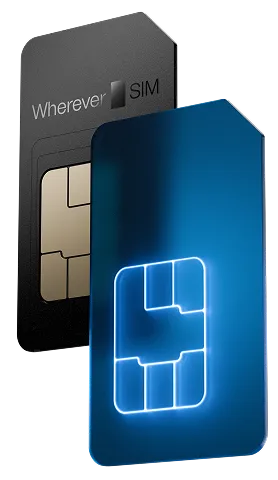The digitalization of the energy sector is in full swing and will fundamentally change the energy market in the coming years. The resulting opportunities are enormous, as are the challenges. There is a lot of potential for more efficient use of energy, particularly in the area of building automation, e.g. through smart lighting systems, the integration of PV systems, but also smart meter devices and the control of heating, ventilation and air conditioning (HVAC) systems.
With an increasing number of decentralized energy generation plants, there is a need to rethink and reorganize the distribution and control of electricity. Intelligent metering systems such as smart meters and machine-to-machine communication will play an important role in this transformation. In addition, the role of IoT in HVAC (Heating, Ventilation and Air Conditioning) is becoming increasingly relevant as we strive for smarter and more energy-efficient buildings.

M2M communication for networking all network participants
One of the biggest challenges of the energy transition is to provide decentralized energy, such as from solar and wind power, in line with demand. This depends not only on storage options, but also on the expansion of the grids and the efficient provision and distribution of energy. Intelligent technologies that continuously collect, analyze and exchange data between all grid participants - producers, suppliers, grid operators and consumers - are crucial here. Smart meters are devices that collect and exchange this data. M2M SIM cards enable wireless communication between the devices.
Smart meters work like digital electricity meters that automatically transmit the current consumption and measured values at set intervals via mobile communications. These smart electricity meters have been mandatory since 2020 and have been gradually introduced since then. They offer consumers more transparency about their energy consumption and at the same time help energy producers to balance feed-in and consumption. Digital metering technology significantly improves data quality and billing accuracy, with consumption values available on a daily basis. This is helpful in the event of tenant changes and enables electricity producers to base their demand planning on actual consumption.
In addition to smart meters, intelligent meter reading systems also include devices such as smoke detectors that can be read wirelessly. These devices no longer need to be checked on site, but can be serviced remotely and send status updates automatically and independently via radio.
Smart meters and HVAC systems: Intelligent integration in the Internet of Things
Smart meters transmit data to metering point operators, grid operators or electricity suppliers. A typical smart metering system consists of two parts: a digital meter and a communication system known as a smart meter gateway. This gateway is used for mobile data transmission, usually via mobile radio and the LTE standard. For this purpose, the communication unit usually contains an M2M SIM, which is specially designed for data transmission from a device to a system (machine-to-machine, M2M).
HVAC systems are also increasingly being integrated into smart buildings. IoT SIM cards enable improved connectivity and control of these - even in areas of a building that are difficult to access, such as the basement. Just as smart meters optimize energy consumption by monitoring and transmitting data, HVAC systems are constantly exchanging data thanks to M2M SIM cards, enabling more efficient control of heating, cooling and ventilation.
Data transmission via mobile radio: M2M SIM cards in building automation
Mobile radio is a widely used option for transmitting the data collected by smart meters. It has the advantage of being available almost everywhere, with modern radio standards such as NB-IoT and LTE-M enabling interference-free data transmission even in basements. The data from smart meters is automatically encrypted and transmitted wirelessly to a database, where it is collected and analyzed.
M2M SIM cards, such as those from wherever SIM, offer smart meters access to mobile networks. These SIM cards can use the networks of various network operators, which guarantees optimum coverage throughout Germany and beyond. Due to the compact design of digital meters, M2M SIM cards are available in mini, micro, nano and embedded formats. In contrast to the other formats, the embedded SIM is not inserted into an IoT device but is permanently installed, which saves space and makes it ideal for small devices such as smart meters.
IoT SIM cards offer similar benefits for HVAC systems. With seamless data transmission, these SIMs allow HVAC systems to be constantly monitored and optimized so that they operate efficiently and respond dynamically to environmental changes. This not only improves energy efficiency, but also contributes to better air quality and overall building management.
Low-Power Wide-Area (LPWA): NB-IoT and LTE-M for smart metering and HVAC
LPWA networks, such as NB-IoT and LTE-M, are ideal for IoT use cases where energy consumption, building penetration, battery life and cost are critical. These technologies, which are based on existing mobile networks, connect end devices in the Internet of Things. They are particularly suitable for applications that only need to transmit small amounts of data at irregular intervals, making them ideal for both smart meters and HVAC systems.
These technologies are characterized by energy efficiency, low power consumption and excellent building penetration, enabling reliable connectivity even in challenging environments such as basements or shielded rooms. For HVAC systems, this means maintaining connectivity and control even in areas of a building where traditional cellular communications could fail.
As the data volumes for smart meters and HVAC systems are generally low, the radio modules can be limited to the essential functions, which saves energy and extends battery life. This makes NB-IoT and LTE-M attractive for a wide range of IoT projects, as they reduce complexity and costs. wherever SIM offers corresponding M2M plans and SIM cards with LTE-M and NB-IoT coverage, ensuring that both smart meters and HVAC systems can be operated efficiently and effectively.
The future of intelligent integration in energy and building management
The integration of IoT SIM cards into smart meters and HVAC systems represents a significant advance in the digitalization of energy management and building automation. Through secure, reliable and real-time data transmission, these systems not only improve operational efficiency, but also contribute to sustainability goals by reducing energy consumption and carbon footprint.
The future of energy management and building automation lies in this seamless integration of technology, where all components - from smart meters to HVAC systems - work together to create a more efficient and sustainable world.





